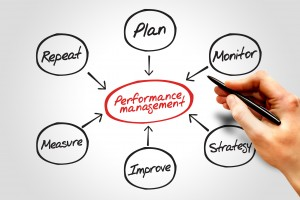ATD Blog
The Purpose of Performance Management: Redefining Aspirations
Wed May 27 2015
Bookmark

Dissatisfaction with performance management is at an all-time high. What’s more, performance management activities such as formal goal-setting processes, mid-year and year-end reviews, and extensive rating and calibration processes cost the average organization millions of dollars annually. Yet research shows individual performance management ratings have no correlation with business unit performance.
Addressing an Urgent Challenge
In response, some organizations have begun to modernize parts of their performance management approach to drive behaviors that are critical in today’s work environment, including:
providing informal feedback
setting clear expectations
working collaboratively.
A few very high-profile companies, including Microsoft and Adobe, have publicly and significantly changed their formal performance management processes. The majority of companies, however, are making incremental changes to performance management by taking more measured steps.
With so much noise in the system, and so many different strategies being held up as the example for how to transform performance management, it’s difficult to know what’s right for your organization. What should be your organization’s goal when it comes to performance management?
What is the fundamental purpose of performance management?
When CEB asks organizations what they use performance management for, the top answers are:
making decisions about pay, promotions, or other personnel actions
identifying poor performers and holding them accountable
providing documentation to defend against legal challenges.
But when we ask organizations what performance management should achieve for them, the answers are much more aspirational:
help employees develop and grow
improve communication between employees and managers
align individual work to achieving the organization’s goals
help individuals and teams perform to their highest potential.
The first list is decidedly administrative in nature, while the second reflects the desire for performance management to improve individual and organizational performance. However, performance management approaches that try to serve too many purposes will not serve any one purpose well.
Finding the Underscoring Purpose
Different types of decisions require different processes and criteria. For example, an employee’s annual merit increase is typically based on the organization’s budget, changes in the labor market for the specific job, the employee’s salary relative to her peers’ and her performance. In contrast, a decision about who to promote is based on performance and demonstrated potential to operate successfully at the next level.
Ultimately, organizations must align their performance management approach with the purpose they most want to achieve. If the fundamental purpose of performance management is to help organizations maximize productivity by enabling employees to perform to their potential, the approach should be designed to accomplish the following three critical goals:
Enable employees to align their efforts in a manner that contributes most to the organization’s goals.
Equip employees with guideposts to monitor behavior and results and make adjustments in real time as needed to maximize performance.
Help employees identify and remove barriers to performance.
There is no single best design, but all organizations will realize the value of performance management if they 1) define the objectives they are trying to achieve and 2) focus squarely on the performance management practices and, especially, the behaviors that matter most in driving improved performance.
Editor’s Note: The next installment of this blog series will examine the three shifts that companies must make to significantly improve performance management in today’s dynamic, complex work environment. You can learn more about how industry leaders build and sustain high-performance cultures at cebglobal.com.
Check out similar articles: Your Employees Hate Your Performance Review

